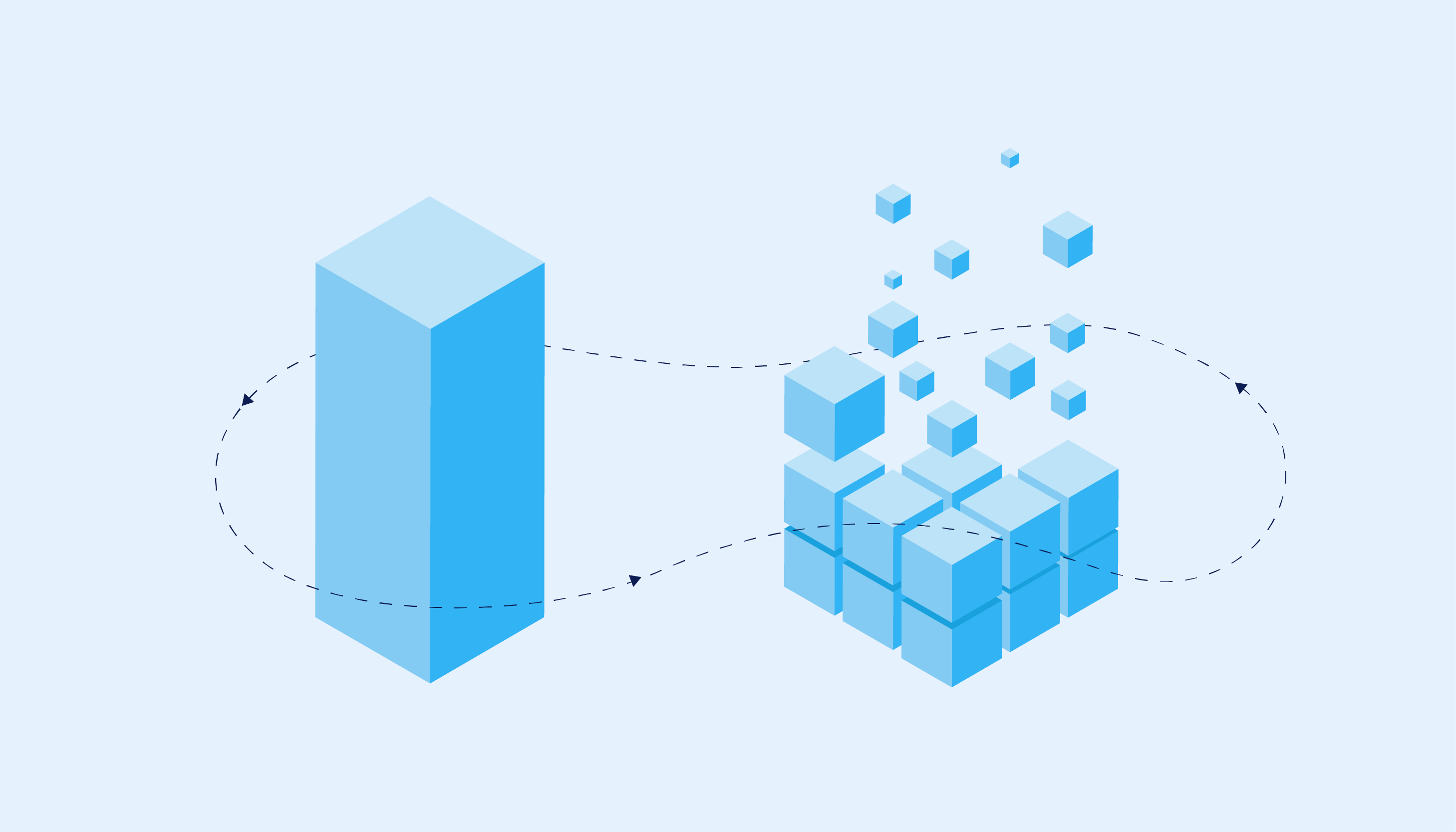
Microservices and monolithic are both a different approach to software architecture. Understanding the difference between microservices and monolithic can be the key to choosing the right approach for your project needs.
As the name suggests, microservices are a collection of small, discrete services that work together to form a larger, more complex application. Each microservice independently has its own codebase, database and deployment mechanism. This architecture allows for increased scalability and flexibility, as each service can be updated or modified without affecting the entire application. In addition, microservices are often designed to be language-agnostic, meaning that different services can be written in different programming languages, providing more flexibility to the development process.
Unlike microservices, monolithic architecture is created from an integrated codebase where all functions and capabilities of the application are placed together and interdependent. In a monolithic architecture, all code is highly interdependent and difficult to modify. However, monolithic architecture has been the main method of software development for years. The complexity and difficulty of monolithic software development increases with the addition of new parts to the software.

In terms of scalability, microservices have a distinct advantage over monolithic architectures. Because each service is designed to operate independently, developers can easily add new services or modify existing services. Also, the processing power of each service can be increased based on the need. In addition, the independent nature of microservices makes it easier to incorporate new technologies and tools into the application, as each service can be updated or replaced without affecting the rest of the system.
Another key benefit of microservices is the speed of development. Because each service operates independently, developers can work on individual services simultaneously, significantly reducing the time it takes to release new features or fix bugs, and increase the overall efficiency of the development process. Additionally, since each service is responsible for a specific function, it is easier to manage the development process and ensure that code is properly tested and executed.
In contrast, software development with a monolithic architecture can be slow because changes in one part of the code can affect the entire application, which can lead to long development cycles because every time a change is made, the entire project Must be tested and deployed. In addition, managing the development process in a monolithic architecture can be difficult, as all relationships and entities in the codebase must be understood and managed by every developer working on the project.
When it comes to deployment, microservices offer another significant advantage. Since each service operates independently, it is much easier to deploy new services or update existing services, especially when a new service needs to be deployed quickly. In addition, if it is necessary to return to previous versions, this operation is done with the least dependence and the highest speed.
One of the main advantages of monolithic architecture is that it is often easier to understand and maintain than microservices. Since all the code is in one place, it's easier for developers to understand how different parts of the application work. This architecture is more suitable for small organizations with limited resources because it is easier to find experienced developers in monolithic architecture. In addition, monolithic architectures are easier to maintain because there are fewer distributed components and less complexity to manage.

In choosing between microservices and monolithic, you should pay attention to the existing conditions and needs. Each of these architectures has its own advantages and disadvantages. While microservices increase scalability, flexibility, and speed of development, they also complicate application management and deployment. In contrast, monolithic architecture may be easier to understand and maintain, but it is slow to develop and difficult in the long run.
The decision to choose between these two architectures depends on the specific needs and goals of your organization. Factors such as the number of people on the development team, the complexity of the application, and the speed of development all play a role in determining the best approach. As such, it's important to carefully consider the pros and cons of each approach and choose the one that makes the most sense for your organization's needs.

I am Reza Babakhani, a software developer. Here I write my experiences, opinions and suggestions about technology. I hope that what I write is useful for you.
leave a comment